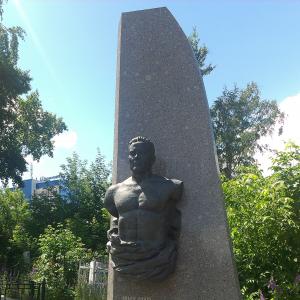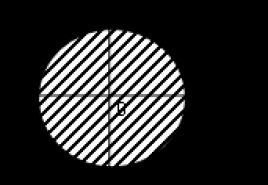Game lesson on sound automation. Didactic games with movements in classes on automating the sound "l"
Play is the leading activity of a preschooler. It is where the child’s speech, attention, memory, and thinking develop, and his personality is formed. In the game, the child perceives the speech task as a game, which helps to increase interest. The use of didactic games in the work of a speech therapist allows you to effectively, efficiently, and, most importantly, quickly automate the delivered sound.
You can automate a sound only when the child pronounces it correctly and clearly in isolation. Automation of sounds in syllables is an important, but uninteresting type of work, which consists of repeated repetition of syllables by a speech therapist. When working on sound automation, it is necessary to adhere to a strict sequence: automation in open syllables (la, le, ly), then in closed syllables (al, el, yl), then in intervocalic position (ala, olo, ulu), and finally - in syllables with a combination of consonants (sla, pla, lie).
To make the automation process interesting and dynamic, it is necessary to use colorful and varied didactic material. We present to your attention a selection of games for practicing sounds in syllables that I use in my work. These games can also be used when teaching reading.
The purpose of the games: to make the process of automating sounds in syllables unique and interesting.
Task options:
- “Walk with your fingers” along the syllable path, clearly pronouncing the sound being studied;
- Read the syllables, covering them with chips at the same time, then remember the location of the syllables. For example, remember the names of chickens;
- Count how many times a syllable is repeated;
- Remember and repeat a number of syllables;
- Come up with words with these syllables;
- Syllables can be pronounced with different intonations, change the pace of reading;
- Come up with a story about the hero of the picture.
These games will help turn sound automation into an exciting and emotional game.
 |
 |
|
 |
 |
 |
 |
 |
 |
 |
 |
 |
FOR AUTOMATING “DIFFICULT” SOUNDS
speech therapist teacher
Joke O.S.
Didactic game on sound automation [C]

Target: fixing the sound [S] in words.
Equipment: a picture of a Snowman; snowflakes, on the back of which there are pictures with automated sound.
Progress of the game: A snowman is the snowy grandson of Santa Claus. What do you think he eats? He also loves “delicious” snowflakes. Let's feed him. But it's not easy, look what's written on the snowflakes. Pronounce the words, clearly emphasizing the sound [S].
Didactic game on sound automation [Z]
“Treat Zoya with some candy”

Target: fixing the sound [З] in words.
Equipment: a picture of a girl Zoya; templates of candies, on the back of which there are pictures with automated sound.
Progress of the game: The girl Zoya loves sweets very much. Let's give Zoya a treat. You take a piece of candy and name what is written on it. If you clearly pronounce the sound [Z] in a word, the candy will go to Zoya, if not, then the candy will remain with me.
Didactic game on sound automation [Ш]

Target: fixing the sound [Ш] in words.
Equipment: a picture depicting Mishutka with a daisy; color templates, on the back of which there are pictures with automated sound.
Progress of the game: Today is Mishutka's birthday. He loves flowers very much, especially daisies. Let's collect a bouquet of daisies and give it to Mishutka. Name the picture on the back of the flower, clearly pronouncing the sound [Ш].
Didactic game on sound automation [H]

Target: fixing the sound [H] in words.
Equipment: a picture of a clearing with flowers; butterfly templates, on the back of which there are pictures with automated sound.
Progress of the game: Many beautiful flowers bloomed in the meadow. Butterflies flocked to their scent. It is necessary that each butterfly gets a flower. Name the picture on the back of the butterfly. If you pronounce the sound [H] correctly in a word, the butterfly will land on the flower; if not, the butterfly will fly away to another clearing.
Didactic game on sound automation [L]

Target: fixing the sound [L] in words.
Equipment: picture of a sleeping baby; cloud templates, on the back of which there are pictures with automated sound.
Progress of the game: The baby sleeps sweetly and has magical dreams. Let's see what he dreamed. Take the cloud and say the word, clearly pronouncing the sound [L].
Didactic game on sound automation [R]

Target: fixing the sound [P] in words.
Equipment: a picture of Carlson; gift templates, on the back of which there are pictures with automated sound.
Progress of the game: Today is Carlson's birthday. He invited many friends. Who do you think came to Carlson's party? The guests brought many gifts. Let's see what gifts Carlson received. Name the pictures, clearly pronouncing the sound [P].
Prepared by a speech therapist teacherShlyanina O. P.
MBDOU No. 1 of Kurganinsk, Krasnodar Territory
Talking hands.
Let's assume that we are talking about automating the sound of Sh. The speech therapist gives instructions: You and I will play “talking hands.” Let's teach the left hand to say Sh., and the right hand A. Let's try! The teacher takes with his hand left hand child and shows how to combine the pronunciation of Ш with a light blow of the hand on the table, in the same way the right hand “learns to say A. alternately, lightly hitting the table with his hands, the child pronounces at a slow pace: Ш – А, Ш – А. Gradually there is a pause between is reduced by sounds, and the child proceeds to continuous pronunciation.
Steps.
There are “steps” in front of the child. You need to walk your fingers up and down the steps, pronouncing the syllables correctly. Another option is that the steps are laid out from sticks by the child himself. The task remains the same.
Chamomile.
In the child’s notebook, the teacher draws a large daisy, in the center of which he writes the necessary consonant letter (r, l, z, s, zh, c, etc.). Vowels are written on chamomile petals. The child, moving from one petal to another, reads forward and backward syllables. The exercise is carried out with children 5 - 7 years old who know the letters.
One - one step, two - one step.
The child stands with his hands on his belt. The teacher invites him to walk the entire room, at each step, repeating a given syllable or series of syllables.
Telegram.
Children holding hands form a circle. The teacher, turning to the child, names a sound, a syllable or a pair of syllables. The child must repeat this syllable, turning to his friend. The telegram goes around the circle, returning to the teacher. If one of the children repeats the sound sequence incorrectly, it means that the telegram did not reach the address, and the game begins again. The exercise is used not only to automate sounds in syllables, but also to develop phonemic awareness. For example, the syllables sha - sa, ko - go, zhu - zu, etc. are transmitted in a circle.
Add a syllable.
The children stand in front of the teacher, the speech therapist, throwing the ball, names the beginning of the word, and the children finish with the required syllable: li - SA, flask - SA, ko - sy, but - sy.
Buttons.
In front of the child there is a “piano”, the child, pressing the keys, names the given syllable. A penalty point is awarded for an incorrectly pronounced syllable.
Winter and spring.
Pictures are laid out in front of the children: winter and spring. The speech therapist asks the child to help complete the sentences by adding the last syllable.
Winter has come to us,
Brought snow and blizzard...la.
Everything that Al...la scattered...la,
The blizzard covered with snow...la!
Spring has come,
Al...la at once everything is ours...la.
Al...la came out onto the lawn,
He sees Yu...la lying there.
Using the following gaming techniques will help you effectively carry out the stage of automating sounds in words.
Build a house.
Automation of sound in words, development of phonemic perception, hand motor skills. The children have cubes in front of them, with pictures with automated sounds and several pictures with other sounds pasted on them. The child chooses cubes, naming the picture, and builds a house. A penalty point is awarded for an incorrectly chosen cube.
Sun.
Reinforce the correct pronunciation of sounds in words, practice determining the position of sounds in words.
The sun lies in front of the children. And pictures with automated sound. Children decorate the sun, calling it a picture. Then they close their eyes, and the teacher removes the picture. Children determine which picture is missing and determine the position of the sound in the word.
The following games are played according to the same principle: “Let’s decorate the Christmas tree,” “Collect beads,” “Knots,” “Collect flowers,” “Collect apples,” “Let’s give the doll tea.” Games are very effective to play while walking.
Words are all around us.
Children select words with a certain sound; only those words that the child pronounces correctly are accepted.
The fourth one is extra.
The child is given the words: lynx, crow, giraffe, rocket. Child removes one of the words, explaining why . A rocket is not alive, a crow is a bird, a cow is a domestic animal. All that remains is for the giraffe and the lynx to find general signs and difference.
The pile is small.
The child has pictures with a certain sound in front of him. The teacher asks them to put the pictures together and then sort them out into small pieces. There is a flag on the dove, a horse on the flag, a shovel on the horse, palms on the shovel. If a player makes a mistake while pronouncing the text, another player enters the game. In the second round of the game, children put together a pile without pictures.
Lotto.
All cards are divided between children. One of the children begins by laying out a card and saying what is written on it: “I have a teapot and seagulls.” Another child selects a suitable card: “And I have a seagull and a turtle.” The child who runs out of cards wins.
Fishermen.
Pictures with a certain sound and additional pictures with other sounds are laid out in front of the child. The child holds a fishing rod in his hands and, when given a signal, must catch all the pictures with a given sound.
Continued in the next publication...
The author is pleased, it’s not difficult for you - click “I LIKE”It's always fun and interesting to play. In this article I would like to introduce you to educational board games, which will help your child automate the sounds in speech, as well as develop the child’s memory and imagination.
Automation of hissing sounds
Automation of sounds Ш
GAME "Hedgehog"
The playing field is laminated or placed in a file, draw on the field big hedgehog without needles. After pronouncing a syllable or word, the child draws needles on the hedgehog.
Rules of the game. One day the hedgehog got sick: all his needles fell off. The hedgehog sits and cries. Let's cure the hedgehog and give him back his needles. And to do this, you need to remember and pronounce words with the sound Ш, then our hedgehog will grow new needles. If you need to differentiate sounds, for example, the sound S and Sh, then you can pronounce words with these sounds, and let the child only repeat the words with the sound Sh, and then vice versa. After the baby has pronounced the word clearly and correctly, ask him to finish drawing a needle for the hedgehog.
Examples of words for automating the sound Ш: hat, shirt, bear, chamomile, lily of the valley, baby, baby, grandmother and others.
Examples of words for differentiating the sounds S and Sh: pussy, bear, helmet, porridge, tower, fable, rat, roof, strength, awl.
Automation of sound Ш, Ш
GAME "Balls"
The playing field is laminated or placed in a file. Draw balloons scattered on the field different colors without strings, draw a girl under them. After the child has pronounced a word with the practiced sound Ш or Ш, ask him to finish drawing a thread to the ball.
Instructions for the game. It was Masha's birthday and she was given a lot of balloons. But while playing with them, the girl broke all the strings of the balls. She is very sad because the balls are flying away. Let's “tie” the strings to the balls. In order for the strings on the balls to hold tightly, you need to clearly and correctly pronounce the words with the sound Ш. Then you say the words, the child repeats and draws the strings on the balls.
When differentiating the sounds Ш, Ш on the playing field, draw blue and green balls. When pronouncing a word with the sound Ш, the child draws a string to the blue ball (the blue color symbolizes the hardness of the consonant sound), and when pronouncing a word with the sound Ш, to the green ball (the green color symbolizes the softness of the consonant sound).
Automation of sound
The playing field is laminated or placed in a file. Draw a large beetle with red wings on the field. While pronouncing words based on the sound being practiced, the child draws circles on the beetle’s wings with a black felt-tip pen, “decorating” them. At the end of the game, ask your child what kind of bug you got (ladybug).
Instructions for the game. Once upon a time there was a beetle, he loved to fly and sing songs: w-w-w. One day it rained heavily and a disaster happened: the water washed away the beetle’s “smart suit.” The bug became sad and stopped singing and flying. Let's decorate the beetle. Remember and say the words starting with the sound Z. And after each spoken word, add black circles to the bug’s wings.
So entertaining board games, yours will definitely like it children, especially since they can be easily made with your own hands no cost.
Natalia Glotova
Didactic games for automating sounds.
Sound automation stage designated in the methodology of speech therapy for correcting sound pronunciation as a stage in the formation of primary pronunciation skills (according to L. S. Volkova).
From a physiological point of view, the stage of sound automation is the stage of consolidating conditioned reflex speech-motor connections on a variety of speech material. The sound that has just been played is fragile; conditioned reflex connections without special reinforcements can quickly collapse.
The purpose of this stage- achieve correct pronunciation sound in phrasal speech, that is, in free, ordinary speech. It is possible to automate a given sound only when the child begins to pronounce it in an isolated state absolutely correctly and clearly with prolonged or repeated repetition. Sound automation includes introducing sound into syllables, words, sentences, and coherent speech.
To automate sound, techniques of reflected repetition and independent naming of language units from pictures, diagrams, and symbols are used. The work proceeds sequentially and gradually, from simple to complex.
The period of automation of a newly delivered sound sometimes stretches for a long time and is difficult for the child (this is especially true for children with minimal dysarthric disorders, since repeated repetition of the same type of lexical material is required. To ensure that these exercises do not cause boredom in children and reluctance to work, it is necessary to create conditions for successful solutions to this problem.
The use of educational games and game form classes in general allow you to maintain the child’s interest in classes and increases the stability of his attention and self-control over the correct pronunciation of sounds in his own speech during class.
Games and gaming techniques used to automate sound in an isolated position.
In order to automate a sound, you must first learn to pronounce it in isolation, that is, separately from other sounds.
"Ladder" The toy climbs the ladder. At each new step, the sound being practiced is clearly pronounced.
"Sound Tracks" We move our finger along the path and pronounce the sound being practiced.

Use of onomatopoeia.
Sing the “water song” ssss. “Pump up the pump” ssss.
Ring like a “mosquito” z-z-z. mosquito s-z-z-z.
Hiss like a snake shhhh.
Buzz like a beetle.
Growl like tiger r-r-r. Tiger cub ry-ry-ry.
Sound like an airplane l-l-l.
Games and gaming techniques used to automate sound in syllables.
"Watch" the child pronounces a syllable or word as many times as the hand on the clock shows.

"Beads" stringing beads on a string, the child pronounces the syllable.
"Pyramid" By stringing the rings of the pyramid onto the rod, the child pronounces the syllable.
"Jingling Jars"
Each syllable is indicated by its own color. The child takes a circle and names the syllable corresponding to its color, then puts it in a jar. When all the syllables have been named, the jars turn into “ringing” jars.


"The bug flies to the petals"
A bug flies up to each petal, the child names a syllable.

"Buttons" pronouncing a syllable with an automated sound, the child simultaneously presses buttons (Kuznetsov applicator). How many buttons there are, how many times you need to repeat the syllable.

“Repeat as many times as…” The speech therapist will clap his hands, hit the stick, hit the ball on the floor, put the sticks or bones on the abacus.
“Playing the piano”, when, imitating playing the piano, the child pronounces a given syllable 5 times: ra-ra-ra-ra-ra.
Games and gaming techniques used to automate sounds in words.
Game "Collect the picture."
The child makes up cut picture and calls the word the object that is depicted in the collected picture.

Game "Tracks".
We run to the picture and name the word.

Game "Find the path for the sound"
Walk along the path (pictures) that depict an object containing an automated sound.

Game "Spinner".
Pictures depicting an object containing an automated sound are laid out in a circle. The child starts the spinner. While the spinner is spinning, the child makes an isolated automated sound. The spinner stops and points to the picture with an arrow. The child names the object shown in the picture.

Game "Chamomile".
Collect chamomile petals to its core. Name the picture depicted on the petal.

Game "Train".
Attach carriages with pictures - objects containing automated sound - to the locomotive. Speak the words.

Game "Fisherman".
Fishing rod with magnet. Fish with a metal clip that attaches pictures with automated sound. The child catches a “fish” and names the object shown in the picture.

"Dry pool."
Box of pearl barley. Buried in the cereal are small toys with names that have an automated sound. The child catches a toy from the pool and names it.

“Guess the riddle - name the answer.”
Guessing riddles in answer words that have an automated sound.
Game "Sound Clock".
Name the picture-words that the arrow shows.

Game "Day-Night"
6-8 pictures with automated sound are posted. The child names the pictures. “Night” comes - the child closes his eyes. During the “night”, a picture is removed or a new one is added, or the pictures are swapped. The “day” comes - the child opens his eyes. Should he say what has changed?
Game “Name the words from the plot picture.”
The child must name the words based on the plot picture.
Game “Come up with words with sound.”
Come up with as many words as possible with automated sounds.
Game "Save the Sound".
A sound eater comes and “steals” the sound from the word, and the child must save the sound - return it to the word and say this word correctly: gla. a – eyes, k. from – mole.
Games and gaming techniques used to automate sound in phrases and sentences.
“Agreeing sentences using pictures.”

"Dunno's Suggestions."
Dunno makes mistakes all the time - in his sentences the words are not friendly (Roma is chopping wood. Egor is going to roll head over heels down the hill., or the words are out of place: The cat ate the mouse. The fur coat has a beautiful Masha. The child helps Dunno correct the mistakes, explaining that they did: “made friends” of words in a sentence, put the words in order.
Game "Come up with a proposal."
The goal of the game is to come up with a sentence that contains as many words as possible starting with R. We start with a sentence of two words. For example: Yura is playing. We add other words to it with R. Joyful Yura plays the drum. Other possible final sentences: Sad Roma paints the frame in the evenings. Egor collects beautiful, large red tomatoes from the garden. Zhora chops wood with an ax in the yard in the morning.







